Alphonse Mucha the Art Nouveau master.
The Czech artist is most widely known for his use of organic curves, whimsical figures, intricate decorations, and shifting the world of poster design. As I viewed the life of such a successful artist in a biographic format, it inspired me to continue working diligently and holding my dreams close.
Inspiration and Foundation
The visionary artist was born in Ivancice, Moravia (now a region of the Czech Republic), in 1860. During his youth, he was inspired by a Fresco in a local church and decided his calling was to be an artist. Although he struggled academically, he was determined.
His primarily self-taught skills in decorative art earned him a position for the Vienna Theatre Company, where he worked for a few years painting scenery for the productions. When he returned to Moravia, he was able to find some local commissions.

Eventually, he had the opportunity to show his skills to Count Karl Khuen. The nobleman was impressed with his abilities and sponsored the young Mucha to attend the Munich Academy of Fine Arts.
A few years later, he moved to Paris in 1887 to continue studies at the Academie Julian and Academie Colarossi and began producing magazines and advertising illustrations. There are very few instances of his early works before his artistic education.
Parisian artist life and Breakthrough
While working as an illustrator and painter, Alphonse lived above the prominent cafe Madame Charlotte’s Cremerie. This was a local gathering spot for many French art artists, and he spent his time immersed in both his work and the thriving art culture.
With his growing network of creatives, he received an opportunity that would change his life. While accounts of the precise timeline vary, it can be agreed upon that he had no longer than two weeks to complete his famous poster Gismonda. This departure from classic poster design earned him overnight fame, and the floodgates opened.
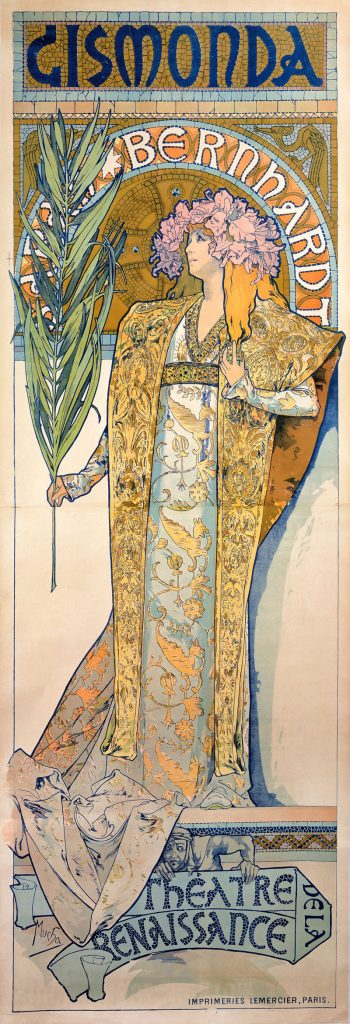
His repertoire would expand to include posters, paintings, advertisements, book illustrations, jewelry, carpets, wallpaper, and theatre sets in his critically titled “Mucha Style”.
Personal expression amongst the commercial success.
Alphonse Mucha found himself yearning to express his spiritual inspiration and his belief that creative expression was connected to an elevated experience. So he prioritized the time for his masterpiece works.
The unique combination of the Catholic faith, spiritual Mysticism, and a desire to showcase his Slavic heritage led to his pinnacle works Le Pater and the Slav Epic series.

Le pater cover illustration 
One of the Le Pater Illustrations
Le Pater is an illustrated book with a composition that shows the artist’s impression of The Lord’s Prayer. This was a limited edition book series of 510 copies produced in 1899

No. 1: The Slavs in Their Original Homeland (1912) 
No. 2: The Celebration of Svantovit (1912) 
No. 3: Introduction of the Slavonic Liturgy in Great Moravia (1912) 
No. 19: The Abolition of Serfdom in Russia (1914) 
The Cycle of paintings on display in Prague.
And the Slav Epic series is a series of 20 canvases ranging in size that depict various mythology and cultural stories of the Slavic heritage. The smallest is approximately 5 meters tall, and the largest is almost 10 meters.
He painted this incredible series from 1910 through 1928, and when the series was put on display in Prague, it drew an estimated 50,000 viewers in the first week.
A life full of creativity.
Mucha’s portfolio of work has an incredible range of work over the years. His artistic style was the progenitor of Art Nouveau and would have a tremendous impact on the art world. Through a diverse career, he realized and exceeded his dream of being a professional artist.
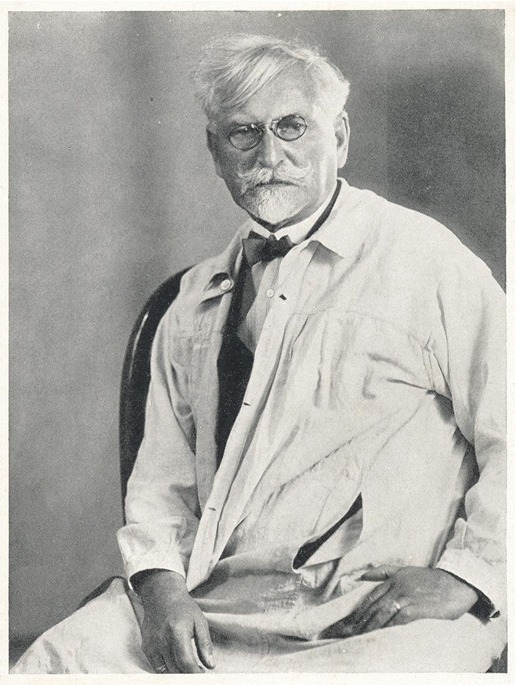
He passed away from a lung infection after being interrogated by the Gestapo in 1939. His descendants established the Mucha Foundation to ensure his work would be advocated for in the future.
Sources:
https://serpentpublishing.com/de/about-alphonse-mucha.html
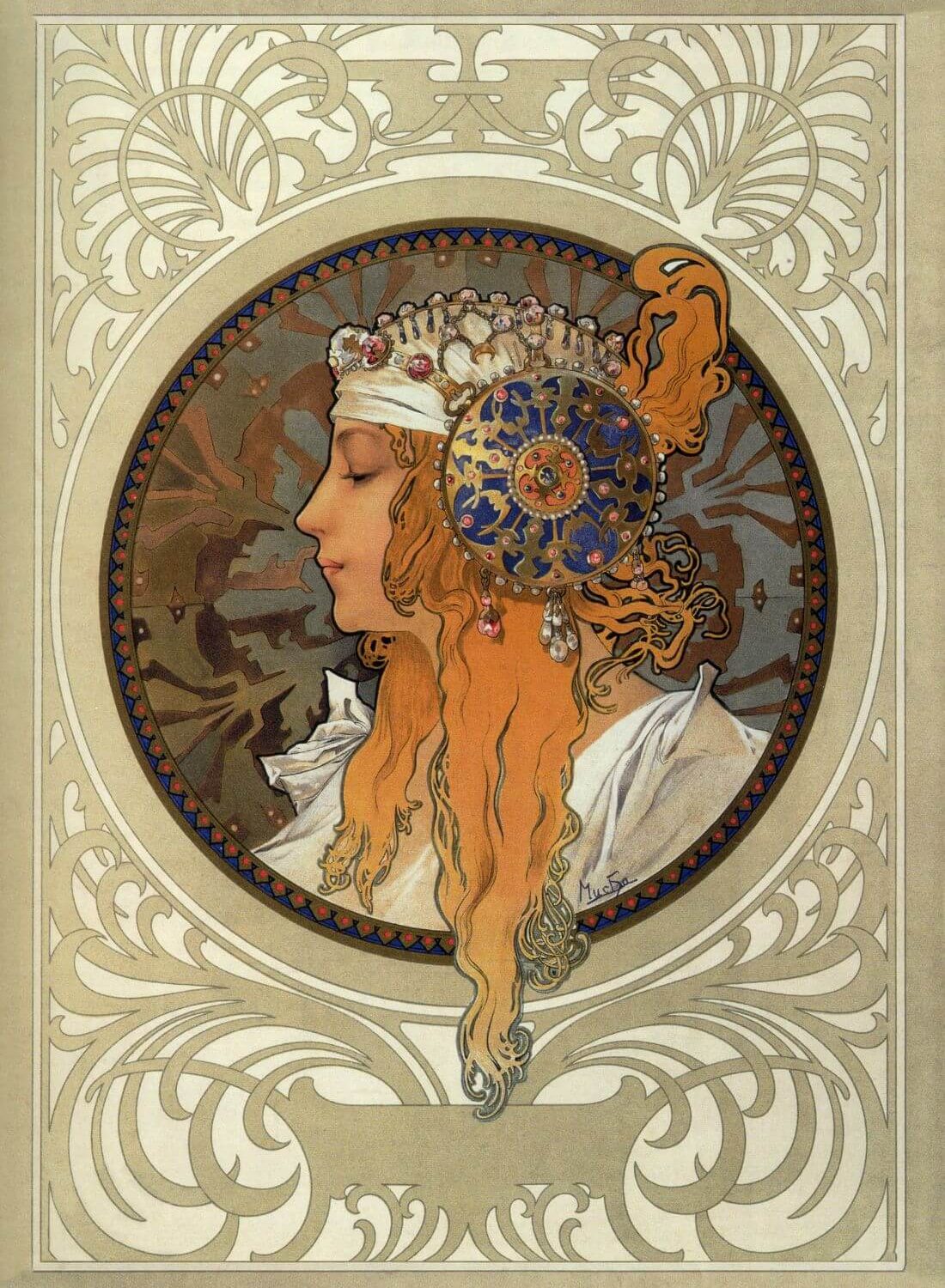
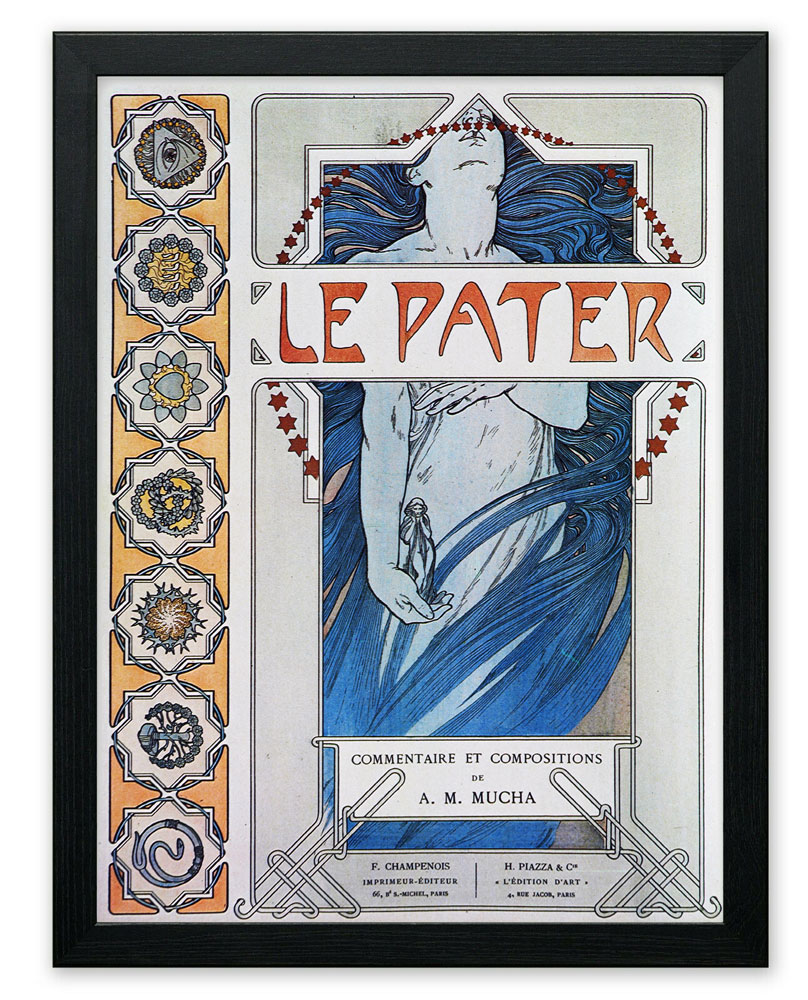
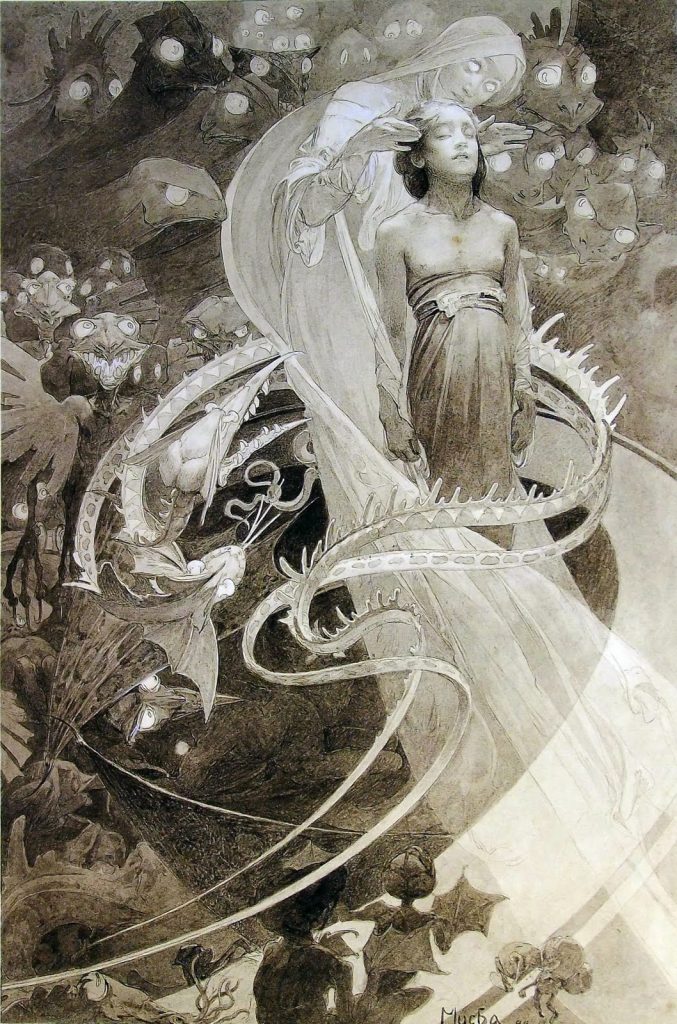
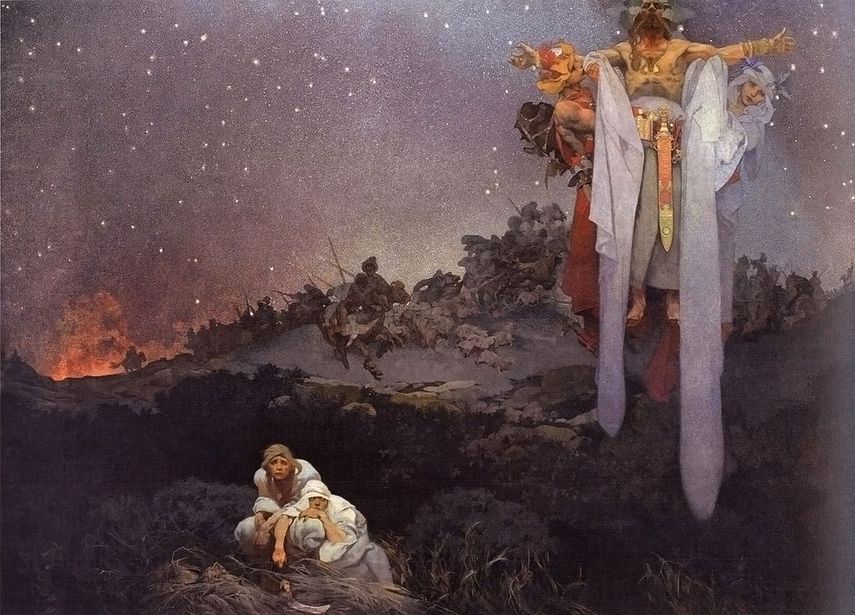
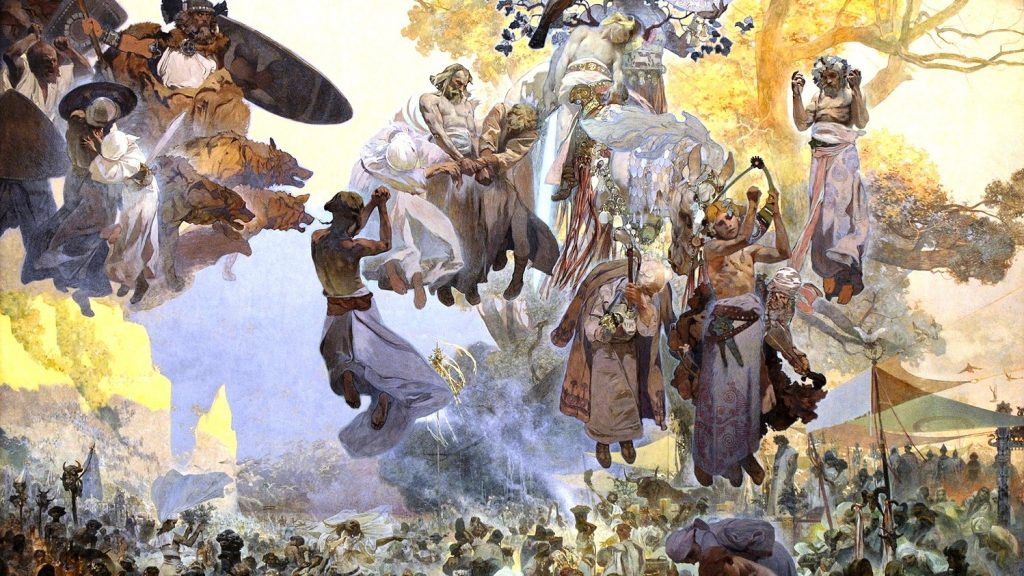

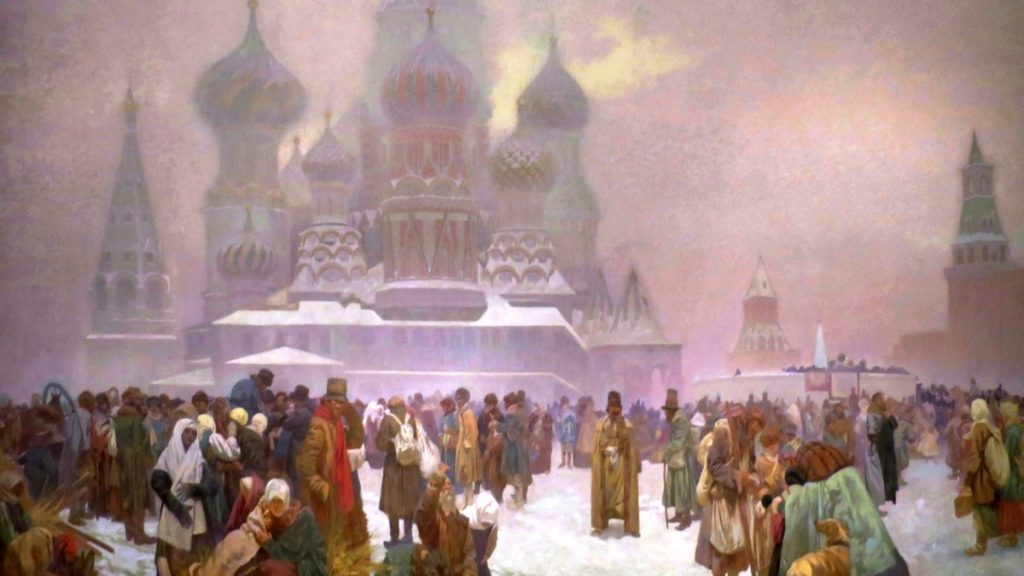

Tolan,
As usual your written work is outstanding and a pleasure to read. You go above and beyond what is asked to really go deep with your background information and insights to whichever artist you post on. Really appreciate this. Also your PK presentation on Bodini was excellent! I like it when students seek out less well known individuals in art history and run with their research. I also like the connection and comparison to Sargent as well. All in all solid work! I’m giving you a 2/2 on your latest blog and a 9/10 for the PK. Well Done!
Jeff